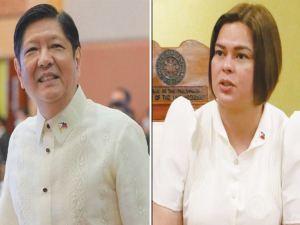When the FIBA World Cup bound Philippine Basketball team flies to China for its Group D series with Italy, Serbia and Angola, coach Yeng Guiao and his boys should be additionally motivated by the sweet memory of their counterparts’ 1954 escapade in the same tournament.
It was the Philippines’ first venture in the biennial conclave, then simply called the World Men’s Basketball Championship that was held in Rio de Janeiro, Brazil where the Filipino dribblers ended up third, a feat unmatched until now.
Not content with that, the nationals, handled by coach Herr Silva, likewise, saw Carlos Loyzaga stash away with the honor of the first from Asia to be selected as member of the World Mythical squad.
That bronze medal finish is, up to this day, not only the best by any nation in Asia but also outside of the United States and Europe.
Loyzaga’s accomplishment was the first, too, for any Asian coming more than six decades before Chinese great Yao Ming duplicated the feat.
The irony of it all is, while Yao has just been recently elevated to the International Basketball Federation Hall of Fame, our own Caloy has yet to be accorded the distinction.
But that’s for the country’s high priests to address.
The 1954 Philippine team to that year’s WC, was practically the same that won that year’s Asiad.
That team is, considered, up to this present time, the finest the country has formed for any international competition.
Six Olympians — Loyzaga, Florentino Bautista, Mariano Tolentino, Antonio Genato, and Pon Saldana, all of the 1952 Helsinki Games, and team captain Lauro “The Fox” Mumar, 1948, London.
Six standouts from the commercial, (MICAA) and schools (NCAA and UAAP) leagues in Francisco Rabat (Ateneo), Rafael Barredo (San Miguel-San Beda), Bayani Amador (FEU), Ramon Manulat, Nap Flores (UST), Ben Francisco (PAL), also made it to the formidable lineup.
The coach was Herminio ”Herr” Silva, who also mentored the Philippine Asiad gold medallist side. The team’s average age was 23, with Mumar, the oldest at 29, and Rabat, the youngest at 18.
Its overall physical attribute was above average, although the team was also rich in experience and “abilidad” a trait Silva’ boys showed in the tournament, particularly the wily Mumar.
Asiad team captain Rafael Hechanova begged off of the team after marriage and so did Jose Ma. Cacho, Eddie Lim and Ignacio Ramos. Mumar was named skipper and Barredo and Francisco took the other vacant slots. Francis Wilson and Alfredo Sagarbarria were named alternates.
The Philippines was bracketed in Group A with host Brazil and Paraguay in the elimination round. The Filipinos debuted with an impressive 65-52 shellacking of Paraguay but lost to their hosts, 99-63. They, nonetheless made the final round when the Brazilians showed the exit door to Paraguay, 61-52.
Also advancing were the US and Canada in Group B, Uruguay and France in Group C and Republic of China (now Chinese Taipei) and Israel in Group D.
Caloy was simply overpowering in his performance and along with Saldana, Flores and Bautista, took care of point-making. Mumar provided the leadership, while directing the tempo of the games.
Spitfire Genato wowed both the opposition and the crowd with his speed and ball-handling while Manulat and Amador played cool and calculating.
The Filipinos drew the Americans in their opening game of the eight-team, one round finals and lost as expected, 56-45. In a replay of their Asian Game, finals, they bounced back into contention with a 48-38 repeat over ROC.
Another victory over Israel, 90-55, sent Silva and his boys to a return match with Brazil and, again, bowed, 57-41. A string of three successive wins followed in game 5, 6 and 7 virtually sealed the bronze medal although the Filipinos needed to beat Uruguay in their final assignment to officially claim the plum.(EDDIE G. ALINEA)








